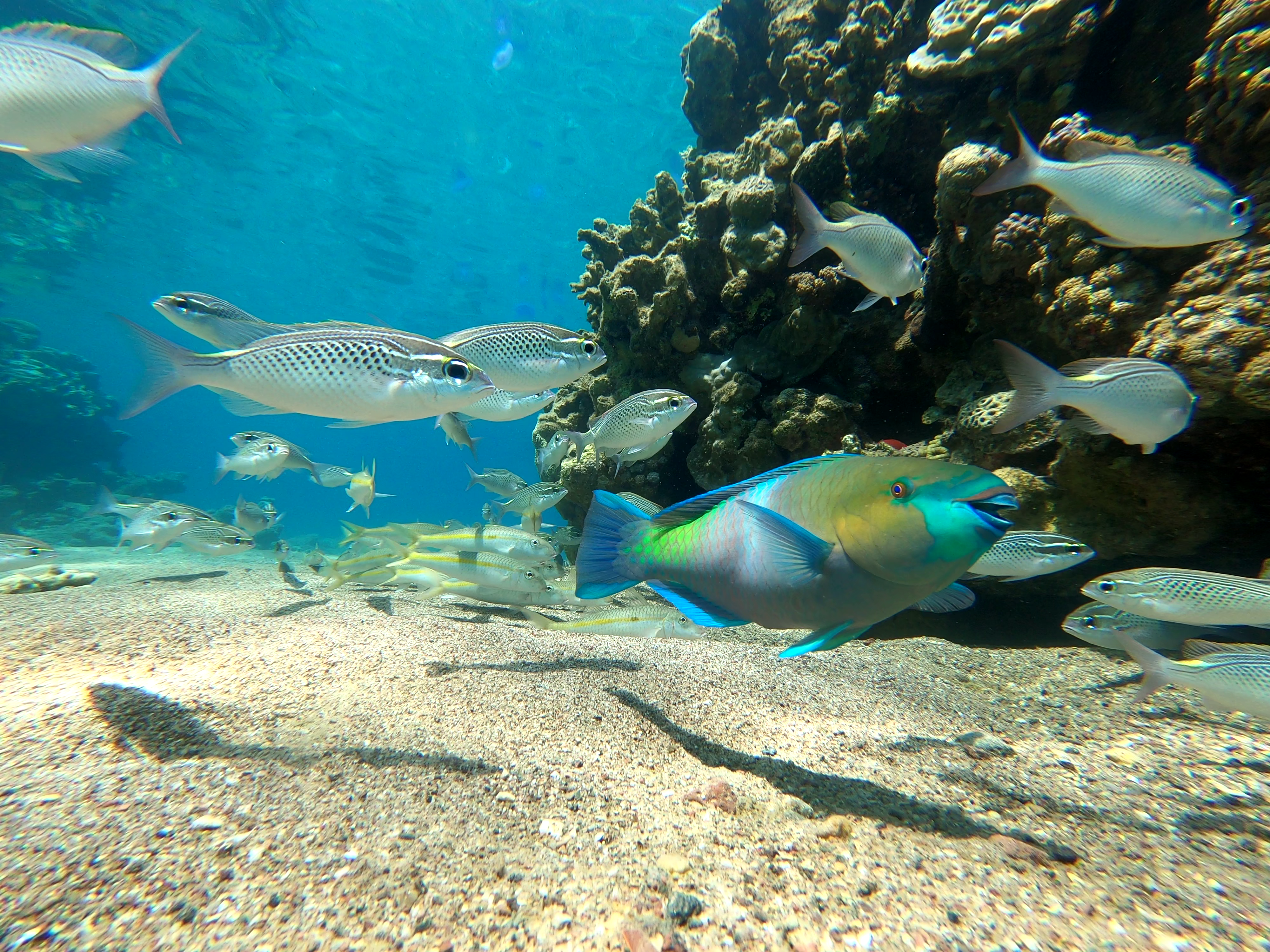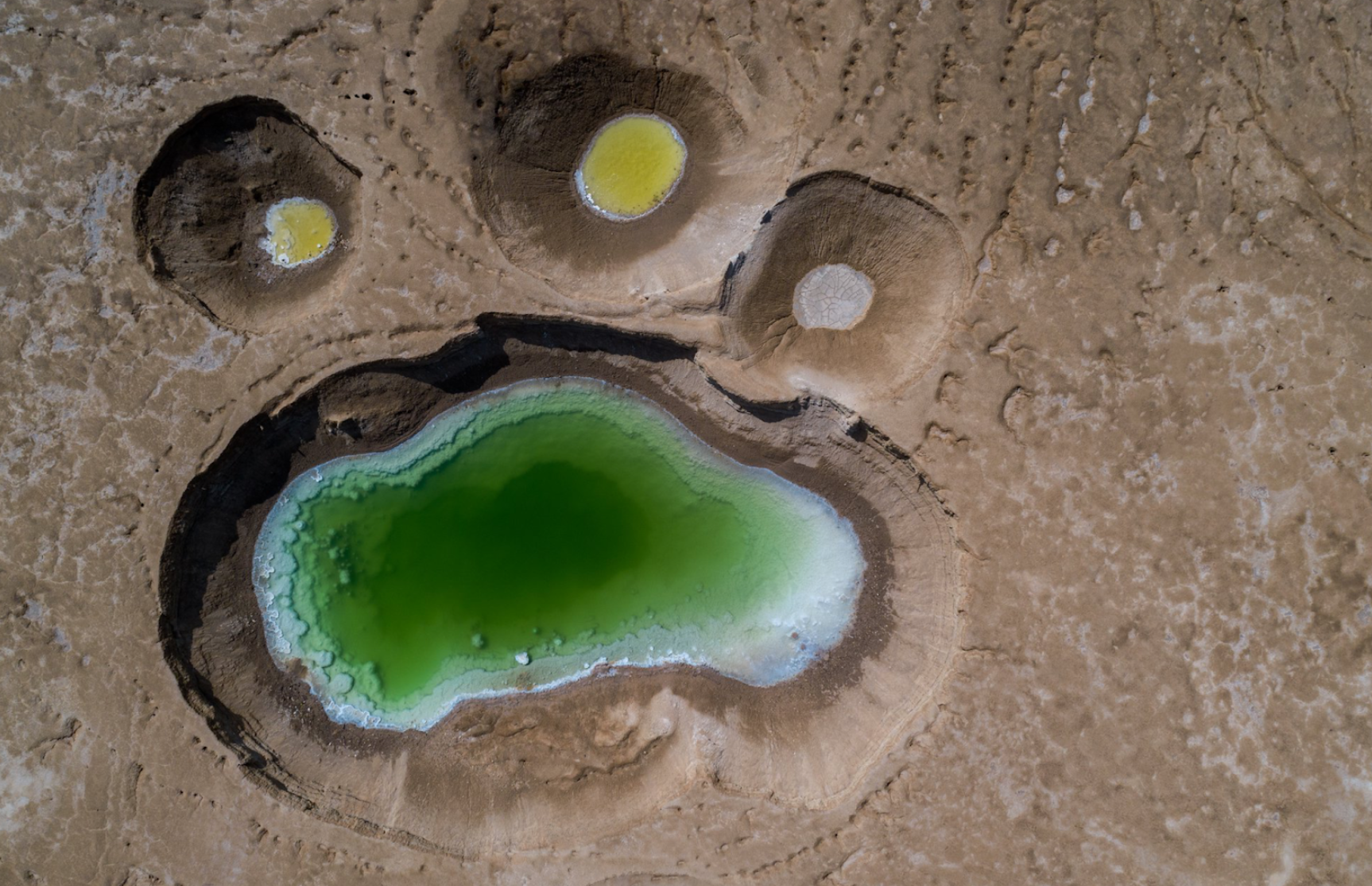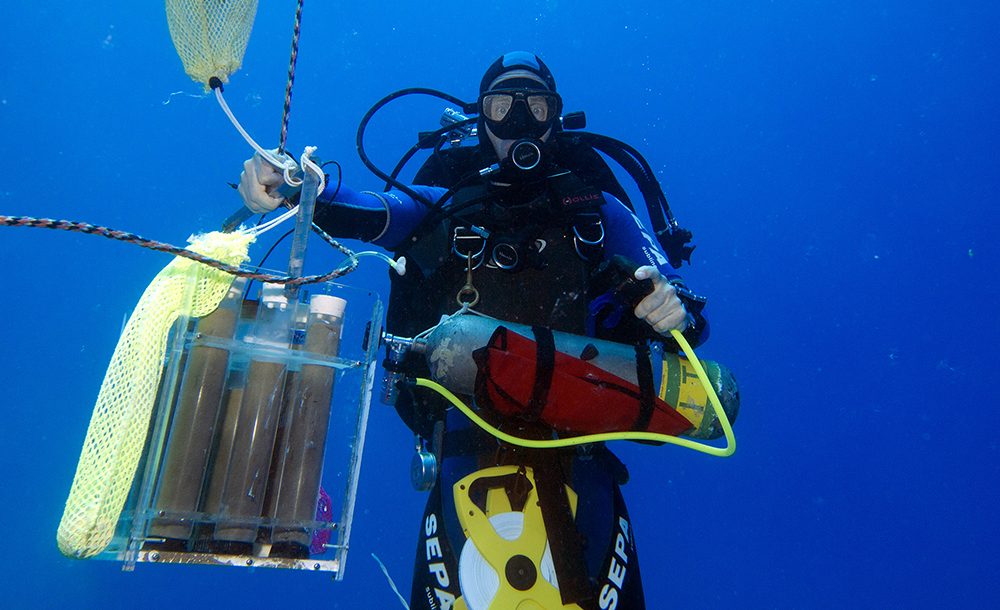Ashalim Stream Still Contaminated from Disastrous Acid Spill
November 12, 2020Monitoring program reveals that even after three years, flora and fauna of the Ashalim stream have not yet recovered from 2017 acid spill.
Contamination with toxic substances is a constant and ongoing threat to many of the streams in Israel. This was illustrated on the eve of Yom Kippur, when a fire raged at the “Azaria” oil collection plant in the Acre area, causing burnt oil to leak and flow in the direction of the nearby Naaman stream. Thanks to the quick response of the Nature and Parks Authority, the Ministry of Environmental Protection, and the Western Galilee Drainage and Streams Authority, the pollution of the stream was almost completely prevented.
Unfortunately, things happened differently in the case of the Ashalim stream, which was severely polluted by acid effluents in June 2017 – one of the worst ecological disasters in the history of the State of Israel. Findings of a stream monitoring program, which were presented at the Annual Science and Environment Conference on October 12-13, revealed that the stream has not yet recovered from the damage despite the three years of rehabilitation efforts. Significant contamination is still evident in the soil, vegetation, and animals in the area.
The Ashalim stream is a unique nature reserve, home to a large variety of flora and fauna, and a popular hiking site. It is located west of the southern part of the Dead Sea and connects the Negev and the Judean Desert, forming an ecological corridor vital to various animals and plants.
On June 30, 2017, a evaporation pool at the Rotem Amfert factory of the Israel Chemicals Ltd. (ICL) collapsed, and about 100,000-200,000 cubic meters of highly toxic acid (Phosphogypsum, a by-product of phosphoric acid production) poured into the streambed of the Ashalim. The effluents, which contained high concentrations of phosphorus, sulfur, fluorine, sodium, and heavy metals, seeped into the soil and fatally damaged the local animal and plant populations.
The enormous ecological harm caused by acid spill led to a series of lawsuits, including the largest ever environmental class action filed in Israeli history, demanding ICL to pay NIS 397 million in damages. As of June 2020, although the stream had been reopened to visitors, the rehabilitation process was expected to take many more years.
The damage is still noticeable

Following the disaster, the Nature and Parks Authority initiated a plan to monitor the stream and it’s biodiversity, which is managed and coordinated by Hamaarag – the national program for assessing the state of nature in Israel. The operation was launched about two and a half years ago and will have a total duration of five years. To that end, 15 teams of researchers from universities and various research institutes in Israel are currently mapping the state of the Ashalim stream based on the condition of the soil, water, as well as small and large animals (except Ibexes, which are surveyed individually by the Nature and Parks Authority). Because there is not enough in-depth information about the state of the stream before the disaster, the researchers compare their current findings to nearby streams that are similar in characteristics.
“Today, two and a half years into the monitoring program, the damage to the ecosystem of the Ashalim stream is still significant. This damage is evident in various trophic levels of the system – producers, consumers, and predators,” says Dr. Rael Horwitz, the monitoring program coordinator, who adds that the situation remains the same even though no less than six floods have swept the stream since the pollution.
Heavy metal pollution
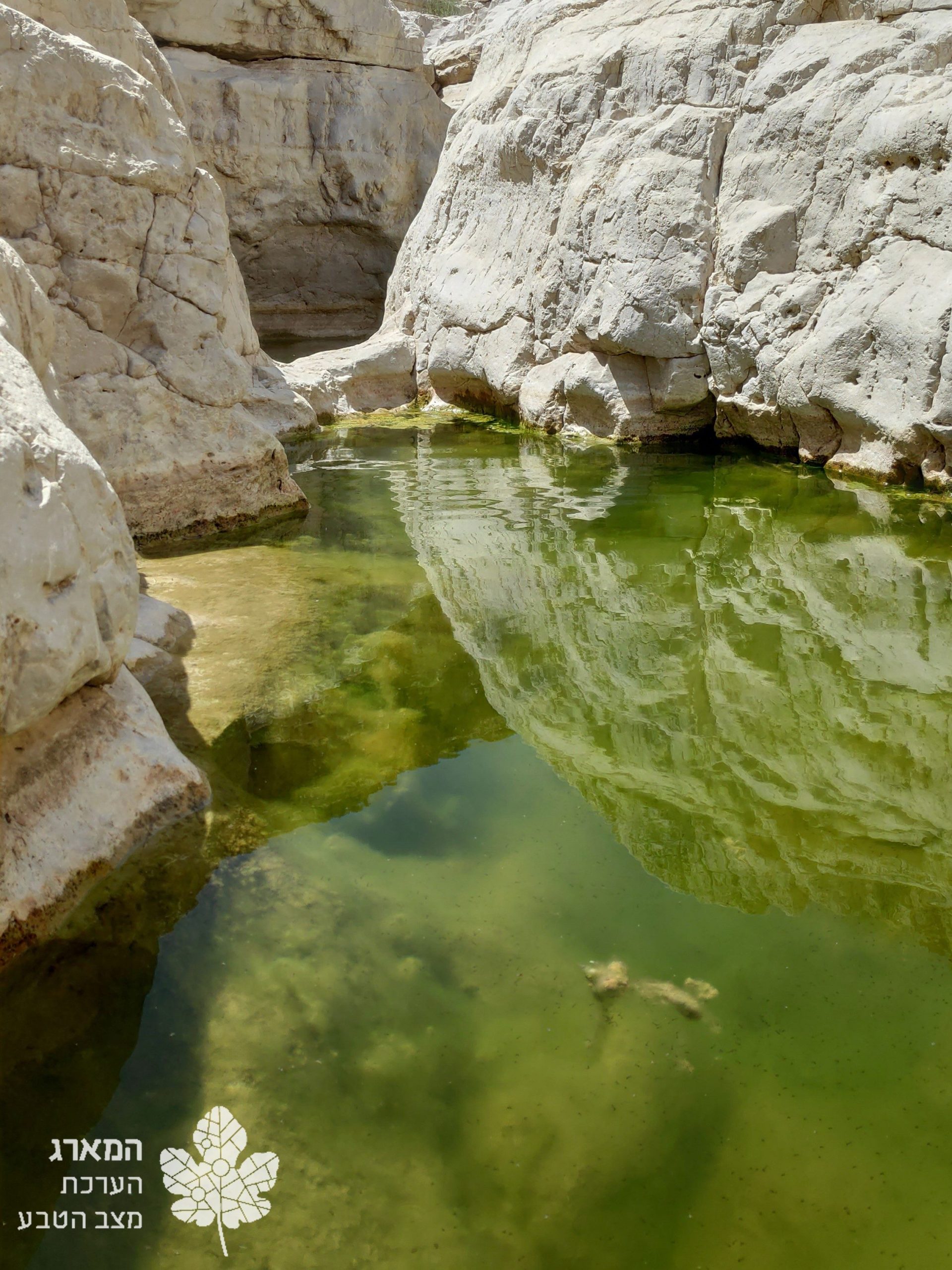
“High concentrations of the pollutants, mainly fluorine, phosphorus, sulfur, and sodium, can be found in the soil. There is evidence that the layer of contamination in some places of the stream bed is tens of centimeters deep. “There is also an over accumulation of heavy metals in plant and animal tissues originating from the contamination,” says Horwitz.
The extensive damage to the streams fauna spans from microscopic organisms through the herbivorous animals to the predators. The researchers found traces of heavy metals such as copper, cadmium, vanadium, and zinc in the body tissues of various plants and animals, including rodents and poultry, at significantly higher concentrations than in samples taken from plants and animals at nearby streams.
One group that has not been able to recover since the spill is the microorganisms – these are the smallest creatures that can be found in the stream, but they are critical for the ecosystem. The monitoring program determined that the Ashalim stream has larger populations of bacteria that are resistant to harsh conditions than the nearby streams. Ammonia-oxidizing bacteria, which are part of the nitrogen cycle, have disappeared from the creek, leading to a shortage of available nitrogen needed for plant growth.
The program has also found damage to the vegetation in the river: vegetation density in the Ashalim stream is low compared to the nearby streams, and the plants do not reach their full growth potential.
Life is coming back
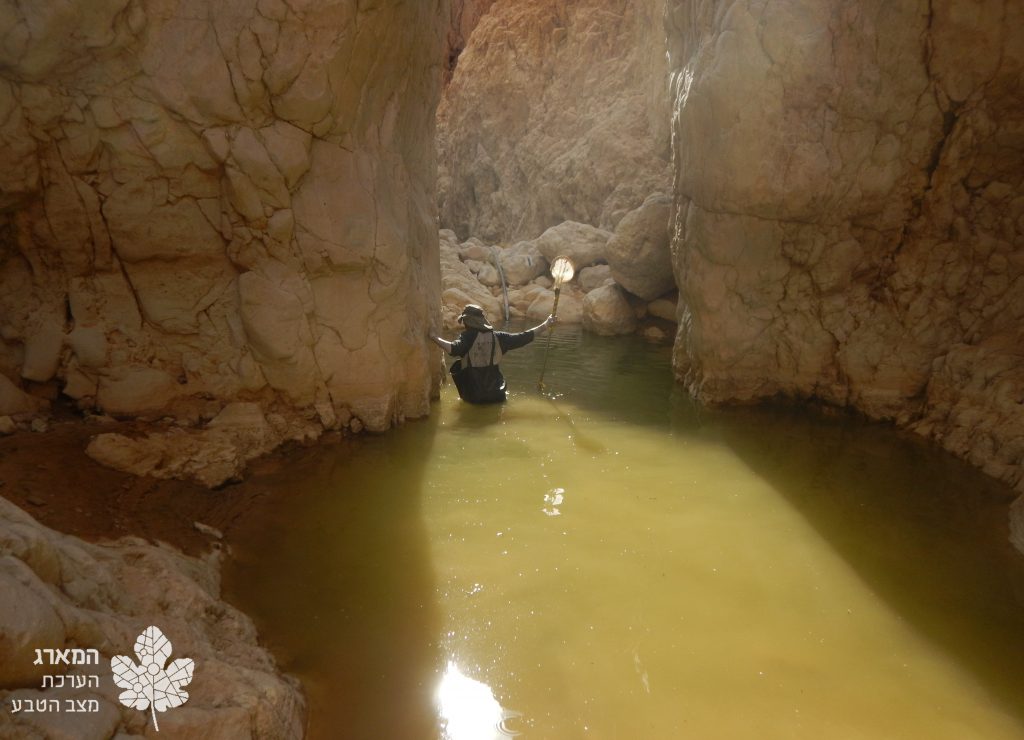
However, the researchers also found some positive developments. One of them relates to the small pools in the narrow and deep parts of the stream. After a big flood, invertebrates such as crabs, insects, and worms can be found in the flooded pools.
“After the spill, the acidity levels in the pools were very high, but in 2018 after a few floods, levels went back to normal, resulting in a partial but rapid recovery of invertebrates, especially the insects,” says Horwitz. According to the scientist, until recently, an important group was almost completely absent on the pools of the stream: Branchiopoda – a class of crustaceans, including fairy shrimp and clam shrimp, that feed on algae and detritus and are an important food source for water insects. “However, this year, after a flood in the stream in March, we found three different groups of crabs in three samples, including the rare fairy shrimp,” he says. “This is a very encouraging sign. Despite the recovery, it is important to note that there is clear evidence of high concentrations of heavy metals in the insects tissue, but we continue to monitor to see if there will be a trend of improvement.”
Another optimistic finding concerns the acacia trees in and around the stream, a key species of the desert ecosystem. “No apparent damage was detected in the adult trees following the incident, which is also very encouraging,” says Horwitz. However, he notes that it is too early to conclude that acacia trees have not been affected by the disaster, as there may be long-term effects, such as the accumulation of pollutants in the trees over the years.
Intervening in natural regeneration
An important question that arises in the context of rehabilitating damaged natural sites is whether humans should intervene in the natural regeneration processes of the ecosystem – or let nature take its course. “On the one hand, human intervention is a violation of the natural system,” Horwitz says. “On the other hand, only our children and grandchildren may see the signs of a slow, partial or complete natural regeneration, and only active measures can reduce the time it takes for the stream to recover and return to a state similar to that before the contamination.”
“Given the complexity of the Ashalim case, there is certainly reason enough to consider active rehabilitation to a certain degree. However, it is safe to say that the system cannot be brought back entirely to its original state, with or without our help. There is damage that cannot be repaired, at least not in our time,” he adds.
The monitoring of the Ashalim stream is expected to continue in the coming years, and the plan will be adapted based on new findings. One major issue that the researchers intend to focus on later is the accumulation of pollutants in the food web. To this end, pollutant concentrations in the bodies of different organisms from different levels of the food web are currently being examined, including animals that form a link between trophic levels – such as snails, which feed on plants and are eaten by rodents.
According to Horowitz, despite extensive research efforts, the evaluation of the extent of the damage is still in the early stages. “On an ecological scale and based on the magnitude of the pollution, a 5-year monitoring program is not enough, and we are preparing to monitor the natural regeneration of the ecosystem of the Ashalim stream for many more years,” he concludes.
This ZAVIT Article was also published in Times of Israel on 5 Jan. 2021
